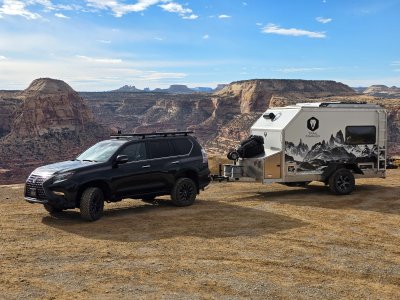In general a WDH is needed if the weight of the trailer is more than about 50% of the GVWR of the tow vehicle.
In practice, for a light duty truck like the Lightning or Terra, they'll say you must use a WDH when the trailer weighs more than 5k pounds.
Example: ALL F-150s have a maximum trailer tongue weight of 500 pounds and a tow capacity of 5000 pounds on the built-in hitch. My Lightning has a rating of ~900 pounds tongue and ~9k pounds towing if I use a WDH.
View attachment 11598
My *guess* is that the 5000 pound number that Scott Keogh said when taking to Leno and had everyone freaking out is because he saw a preliminary data sheet with a maximum tow rating without a WDH. Both the Terra and the Traveler in both BEV and Harvester configurations will be limited to 5000 pounds without a WDH.
This is very interesting. I had no idea the tow rating and tongue weight capacity were so low on the Ford 150 without a WDH. In the smaller off road world trailer WDH cannot be used with articulating hitchs. Some of these off road trailers with articulating hitch carry a tounge weight of 900 to 1,100 pounds. So many folks are over capacity. Do you have any idea what the towing specs with and without a wdh on the latest model Rivians and Chevy trucks are?


